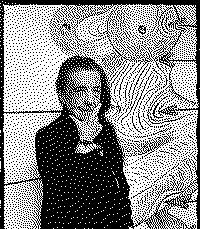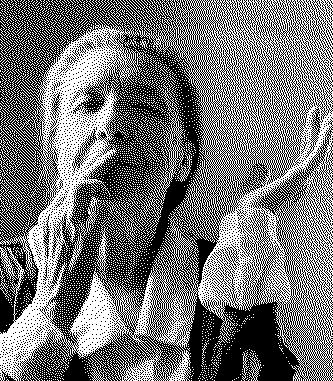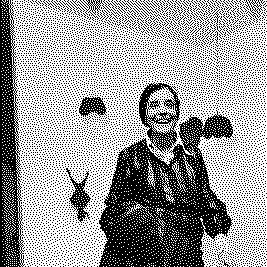Artists/Louise Bourgeois
Fast Facts
Autobiographical Themes
Much of Bourgeois' work is deeply autobiographical, drawing on her personal experiences and childhood traumas. Her art often explores themes of family, motherhood, and memory, with pieces like "Maman," a giant spider sculpture, symbolizing maternal strength and protection (The Art Story) (Encyclopedia Britannica)
Symbolism and Surrealism
Influenced by Surrealism, Bourgeois used symbolic imagery from her conscious and subconscious minds. Works like "Spiral Woman" reflect this influence, presenting distorted and symbolic versions of the female form to explore deeper psychological themes (The Art Story).
Exploration of Psychological Themes
Her art frequently delves into dark psychological themes, including anxiety, vulnerability, and trauma. Pieces such as "The Destruction of the Father" reflect her attempts to process her own complex emotions and history (MyArtBroker).
Materials and Techniques
Bourgeois was innovative in her use of materials, incorporating textiles, marble, bronze, and latex into her sculptures. Her work with soft materials, influenced by her parents' tapestry restoration business, is notable for its tactile and intimate qualities (Encyclopedia Britannica) (MyArtBroker).
Impact on Feminist Art
Although she did not identify as a feminist, Bourgeois' work has had a significant impact on feminist art. Her exploration of the female experience and the body has inspired many feminist artists. Works like "Femme Maison" and "Arch of Hysteria" are often cited in discussions of feminist art (MyArtBroker).
Biography



Louise Bourgeois was a French-American artist, born on December 25, 1911, in Paris, France, and passed away on May 31, 2010, in New York, U.S. She is renowned for her monumental abstract sculptures and installations that often explore themes of domesticity, family, sexuality, the body, and relationships between men and women.
Bourgeois' work was deeply influenced by her early life experiences, particularly the pivotal trauma of her father's infidelity, which left a lasting imprint on her artistic expression (Encyclopedia Britannica) (The Art Story).
Bourgeois initially studied mathematics and geometry at the Sorbonne, drawn to the subjects for their stability and rules. However, the death of her mother in 1932 prompted a dramatic shift in her career path towards art. Encouraged by artists like Fernand Léger, Bourgeois transitioned from painting and printmaking to sculpture in the late 1940s. Throughout her career, she frequently moved between figuration and abstraction, addressing themes of loneliness, jealousy, anger, and fear with a distinct idiosyncratic approach (Wikipedia) (The Museum of Modern Art).
The spiral motif recurs throughout Bourgeois' work, symbolizing both control and freedom. This symbol, among others, reflects the psychological and autobiographical significance in her art, drawing from both her conscious and subconscious mind. Her ability to weave these deeply personal and universal themes together has linked her to the Surrealist movement, though she was not formally affiliated with any particular artistic movement (The Art Story).
Despite facing challenges in gaining recognition within the male-dominated art world of New York in her early years, Bourgeois' career saw a pivotal turn with a retrospective at The Museum of Modern Art in 1982, when she was 70. This event marked the beginning of broader recognition and respect for her work, leading to new confidence and the creation of some of her most iconic pieces, including monumental spiders, room-sized "Cells," and a range of fabric works fashioned from old clothes (The Museum of Modern Art).
Bourgeois' legacy is profound, having contributed significantly to the feminist art movement and continuing to inspire both feminist-inspired work and Installation Art. Her exploration of sexuality, the body, and gender has informed the work of artists across genders and disciplines, highlighting her role as a pioneer in addressing complex emotional and psychological terrains through art (The Art Story).
Importance
Louise Bourgeois' impact on the art world is profound and complex, reflecting her unique position as a pioneering sculptor and installation artist.
Pioneering Large-Scale Sculptures and Installations
Bourgeois is celebrated for her monumental abstract and often biomorphic works that delve into the complex relationships between men and women. Her ability to express emotional depth and psychological intricacies through large-scale sculptures and installations set her apart as a trailblazer in modern and contemporary art (Encyclopedia Britannica).
Autobiographical Symbolism and Surrealist Influence
Her work frequently incorporated symbols with deep personal significance, such as the spiral, representing control and freedom. These symbols, rooted in her own experiences, display the influence of Surrealist principles, bridging personal psychology with artistic expression. This blending of the personal with the universal made her work deeply resonant and pioneering within the realms of Surrealism and beyond (The Art Story).
Advancing Feminist Art and Installation Art
Throughout her 98 years, Bourgeois produced an astounding array of sculptures, drawings, books, prints, and installations, significantly influencing the burgeoning feminist art movement. Her work continues to shape feminist-inspired work and installation art, making critical contributions to discussions around gender, sexuality, and the body. This aspect of her legacy underscores her role in challenging and expanding the boundaries of art to include more diverse narratives and forms (The Art Story).
Engagement with Psychoanalysis and Exploration of Domesticity
Bourgeois's exploration of themes such as loneliness, jealousy, anger, and fear through a variety of mediums reflects her engagement with psychoanalysis. By alternating between figuration and abstraction, she not only navigated her own personal history but also engaged with broader themes of domesticity and the family, sexuality and the body, as well as death and the unconscious. This multifaceted approach allowed her to explore the depths of human emotion and psyche, making her work a critical point of reference for understanding the intersections of art and psychoanalysis (The Museum of Modern Art).
Trailblazing Role for Women in Art
Bourgeois's journey from her early education and disillusionment with the patriarchal art world to her eventual recognition—including a groundbreaking retrospective at The Museum of Modern Art in 1982—marks her as a pivotal figure for women in art. Her struggle for recognition and her eventual success highlight the challenges and triumphs of women artists, making her an inspirational figure for generations to come (Wikipedia).
Technique
Louise Bourgeois' artistic techniques are as diverse and complex as her themes, reflecting her deep exploration of the human psyche, femininity, family, fear, and isolation:
Plaster and Latex
Bourgeois utilized these materials to craft organic shapes, blurring the lines between body and landscape. These materials allowed her to explore themes of birth, growth, and transformation through the visceral and ethereal qualities of her works, evoking the fragility of the human body and the fluidity of psychological states (MyArtBroker).
Fabric Works
Bourgeois' connection to fabric dates back to her childhood in her family’s tapestry restoration workshop. As an adult, she associated the act of sewing with repairing, both literally and symbolically. Fabric became a significant sculptural element in her work during the 1990s, culminating in installations that incorporated old dresses, slips, and nightwear. Bourgeois employed fabric in her later years primarily through printing on old handkerchiefs and other fabrics, constructing books of fabric collages. This shift to fabric works was deeply personal, reflecting her ongoing themes of memory and the tactile presence of her sculptures (The Museum of Modern Art).
Textile Art
In the last two decades of her life, Bourgeois focused significantly on textile artworks. She explored the deep association of fabric with female sexuality, the body, and the unconscious, using textiles to depict complex themes such as sexuality, motherhood, and vulnerability. Bourgeois viewed the needle as a tool for reparation and forgiveness, embodying both destruction and aggression within the medium of textile art (TheCollector).
Thematic Exploration through Techniques
Across her body of work, Bourgeois employed a variety of materials and techniques to delve into central human experiences. Her exploration of the body and femininity utilized materials and forms evoking tactile and sensual qualities, such as her soft sculptures crafted from textiles and latex. Bourgeois' use of domestic materials and personal motifs in works like her Cells series reflected her reflections on family dynamics, belonging, and memory. Additionally, her artistic language articulated themes of fear and isolation through materials and spatial arrangements that create tension and unease, exemplified by her iconic Spider sculptures (MyArtBroker).















